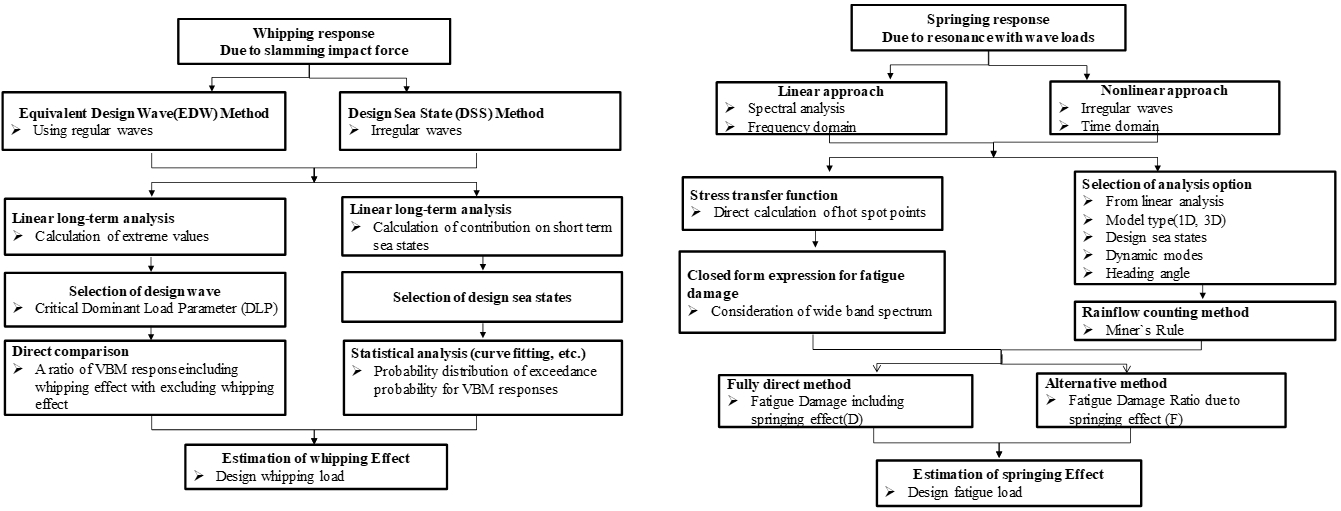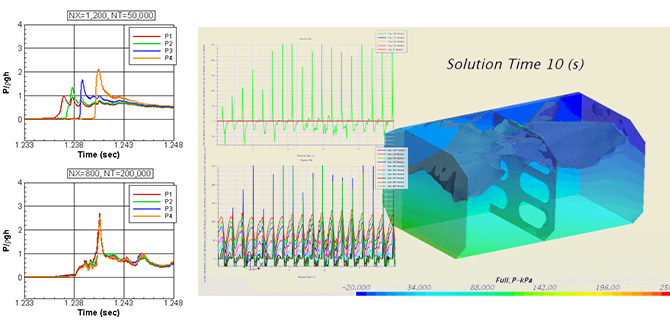-
About us
- About KR CEO KR History KR's Services Mission & Vision CI Organization
- Careers The Right People Job Location Recruitment
- Business Sustainability ESG Management Anti-Bribery Management Quality Management Health/Safety/Environment
- PR Center Digital News Room Publications PR Video Events Webzine
- Notice Board
-
Our Services
- Classification During Construction Introduction About KR EDAS KR EDAS Log in After Construction Introduction Transfer of Class and Certification KR Remote Survey Introduction Types of Remote Survey Survey application FAQ Existing Ships Condition Assessment Program PSC PSC Introduction PSC Information PSC Deficiency Data PSC Check List PSC Regional MOUs PSC Annual Report PSC Link Detention Notice USCG/PARIS MoU Information LNG LNG Carrier LNG Fueled Ship LNG Bunkering Ship Oil Major Inspection Overview OCIMF Annual Report Technical Information Link
- ISM/ISPS/MLC ISM ISPS MLC
- Statutory Services Statutory Survey Foreign Governments Status of Authorization KR at IMO
- Approval of Class Equipment General Scope Approval of Manufacturing Process Type Approval Design Approval Procedure Flow Chart of Marine & Ocean Equipment Approval Flow Chart of Design Approval Documents e-MESIS Approval Lists EU RO-MR Introduction Application Form Documents to be Submitted Approval List
- Cyber Security Certification Service Certification Service Ship & Company Certification Cyber Security Type Approval Software Conformity Certification Technical Service Awareness Training Newsletter International Response
- Certification System Certification Third Party Inspection Global Certification AIP(Approval In-Principle) Introduction Procedure Track Record Renewable Energy Lender’s Technical Advisor for renewable energy Wind Energy
- Naval Service NSAP Rules and standards for naval vessels Core technology and technical support
- Oil & Gas Asset Integrity Sustainability and Management System(AISMS) Introduction Integrated Integrity Management System (IIMS) Integrity Diagnostic and Data Management Corrosion Management Plan and Framework Quality Assurance, Control and Surveillance Digitalization and Paperless Inspection Scheme Global Third Party Inspection Network
- Service Supplier SeaTrust - TM Service Supplier Download Service Supplier Search
- Customer Services Register of Ships EU Ship-info Useful Links
- Online Application Introduction Application Form On-line Application Service On-line application for ISM/ISPS & MLC Application Status
-
Decarbonization & Digitalization
- Decarbonization KR Decarbonization Portal KR Decarbonization Magazine
- Digitalization Smart & Autonomous Ship AI Driven Inspection Condition Based Inspection Digital Twin
- Digital Solutions KR-DAON KR e-Fleet e-Cert Introduction Flag Acceptance User Guide FAQ KR e-Fleet EACSD e-Cert Verification e-MESIS KR-CON Fit-For-Purpose Key Functions Order Online KR-NBM KR-EDAS EACSD KR GEARs SeaTrust Software KR-ERS About KR-ERS Flow Chart for KR-ERS Service Registration KR-SteelCoil About KR-SteelCoil KR-SteelCoil Program
-
Rules & Solutions
- Classification Technical Rules Classification Technical Rules Service Establishment and amendment history of Classification Technical Rules Circulars Guidelines External opinion inquiry on the amendment Part 1, Forms (Survey Programme etc)
- Information & Updates Briefings of IMO SOLAS/MARPOL/Others Port Rule Information ISM/ISPS/MLC SOPEP/SMPEP Rules and Technical Information
- Hull Technology Research Seakeeping Hydrodynamics R&D related to CCS Arctic Technology KR Rules & Guidance on Hull Structures Application Technologies
- Engineering Offshore Platform Commercial Ship Naval Ship
- System Risk Assessment R&D Activities on Risk Assessment Risk Assessment
-
About us
- About KR CEO KR History KR's Services Mission & Vision CI Organization
- Careers The Right People Job Location Recruitment
- Business Sustainability ESG Management Anti-Bribery Management Quality Management Health/Safety/Environment
- PR Center Digital News Room Publications PR Video Events Webzine
- Terms of Website Use
- Notice Board
- Survey
-
Our Services
- Classification During Construction Introduction About KR EDAS KR EDAS Log in After Construction Introduction Transfer of Class and Certification KR Remote Survey Introduction Types of Remote Survey Survey application FAQ Existing Ships Condition Assessment Program PSC PSC Introduction PSC Information PSC Deficiency Data PSC Check List PSC Regional MOUs PSC Annual Report PSC Link Detention Notice USCG/PARIS MoU Information LNG LNG Carrier LNG Fueled Ship LNG Bunkering Ship Oil Major Inspection Overview OCIMF Annual Report Technical Information Link
- ISM/ISPS/MLC ISM ISPS MLC
- Statutory Services Statutory Survey Foreign Governments Status of Authorization KR at IMO
- Approval of Class Equipment General Scope Approval of Manufacturing Process Type Approval Design Approval Procedure Flow Chart of Marine & Ocean Equipment Approval Flow Chart of Design Approval Documents e-MESIS Approval Lists EU RO-MR Introduction Application Form Documents to be Submitted Approval List
- Cyber Security Certification Service Certification Service Ship & Company Certification Cyber Security Type Approval Software Conformity Certification Technical Service Awareness Training Newsletter International Response
- Certification System Certification Third Party Inspection Global Certification AIP(Approval In-Principle) Introduction Procedure Track Record Renewable Energy Lender’s Technical Advisor for renewable energy Wind Energy
- Naval Service NSAP Rules and standards for naval vessels Core technology and technical support
- Oil & Gas Asset Integrity Sustainability and Management System(AISMS) Introduction Integrated Integrity Management System (IIMS) Integrity Diagnostic and Data Management Corrosion Management Plan and Framework Quality Assurance, Control and Surveillance Digitalization and Paperless Inspection Scheme Global Third Party Inspection Network
- Service Supplier SeaTrust - TM Service Supplier Download Service Supplier Search
- Customer Services Register of Ships EU Ship-info Useful Links
- Online Application Introduction Application Form On-line Application Service On-line application for ISM/ISPS & MLC Application Status
-
Decarbonization & Digitalization
- Decarbonization KR Decarbonization Portal KR Decarbonization Magazine
- Digitalization Smart & Autonomous Ship AI Driven Inspection Condition Based Inspection Digital Twin
- Digital Solutions KR-DAON KR e-Fleet e-Cert Introduction Flag Acceptance User Guide FAQ KR e-Fleet EACSD e-Cert Verification e-MESIS KR-CON Fit-For-Purpose Key Functions Order Online KR-NBM KR-EDAS EACSD KR GEARs SeaTrust Software KR-ERS About KR-ERS Flow Chart for KR-ERS Service Registration KR-SteelCoil About KR-SteelCoil KR-SteelCoil Program
-
Rules & Solutions
- Classification Technical Rules Classification Technical Rules Service Establishment and amendment history of Classification Technical Rules Circulars Guidelines External opinion inquiry on the amendment Part 1, Forms (Survey Programme etc)
- Information & Updates Briefings of IMO SOLAS/MARPOL/Others Port Rule Information ISM/ISPS/MLC SOPEP/SMPEP Rules and Technical Information
- Hull Technology Research Seakeeping Hydrodynamics R&D related to CCS Arctic Technology KR Rules & Guidance on Hull Structures Application Technologies
- Engineering Offshore Platform Commercial Ship Naval Ship
- System Risk Assessment R&D Activities on Risk Assessment Risk Assessment
Seakeeping Hydrodynamics
Speed-Power Performance Estimation
- Development of a method for estimating the fuel consumption of ships by using weather & AIS data
- Development of ship’s speed-power performance estimation technique by using on-board measurement data
KR is conducting various researches related to operational performance of ship. KR have developed an algorithm that can estimate the approximate fuel consumption of a currently operating vessel by using AIS and weather data. In addition, KR developed a technique to analyze the operation performance of the target vessel in real time by statistically analyzing the actual operation measurement data of the vessel. When this technology is applied, the customer (shipper) can predict the present status of ship’s speed-power performance compared to the performance at the time of delivery, so it is possible to manage the ship maintenance plan such as hull management (painting, hull or propeller repair, etc.) and ship inspection.
-
 Fuel Consumption estimation procedure by using AIS and weather data
Fuel Consumption estimation procedure by using AIS and weather data -
 ship's speed-power performance estimation technique by using on-board measurement data
ship's speed-power performance estimation technique by using on-board measurement data
Sloshing Load Assessment
- Research on sloshing load assessment and development of sloshing load evaluation guidance
KR is continuously conducting research on estimating the sloshing load that occurs in the cargo hold of LNG carriers in order to respond to the increasing demand and enlargement of LNG ships. Through joint industry project, integrated procedure for sloshing load assessment on LNG cargo was published in cooperation with domestic shipyards and research institutes, and current KR’s sloshing guidance was also revised to reflect the published integrated procedures.

Sloshing Assessment Procedure of KR
IMO Second Generation Intact Stability Criteria Assessment
- Development of Second Generation Intact Stability Assessment Program
- Development of procedure for applying Second Generation Intact Stability Criteria
Even for ships that satisfy the IMO's intact stability criteria, accidents continue to occur, and this is largely due to the problem of dynamic stability. Accordingly, IMO started developing the second-generation Intact Stability Criteria in 2009, and the interim guideline came into effect in 2020. KR is developing procedures and assessment programs to apply this regulation.
-
 Simplified scheme of the application structure of the second generation intact stability criteria
Simplified scheme of the application structure of the second generation intact stability criteria -
 Operational guidance sample of parametric roll
Operational guidance sample of parametric roll
Ship Motion Assessment
- Development of ship motion analysis program
- Research on stochastic analysis
A ship motion analysis is performed to calculate the load for structural strength analysis and the operational efficiency of the ship. KR is conducting stochastic research such as short-term analysis and long-term analysis to generate loads that can evaluate structural strength. KR is continuously conducting research related to motion analysis in areas such as operational performance and minimum propulsion power regulation, which have recently become issues.
-
 FPSO
FPSO -
 LNGC
LNGC -
 Container
Container
-
- Equivalent design wave(EDW) to generate structure
- Determination of Extreme Wave Condition
- Based on following conditions
› Speed : 5 knots
› Wave data : Scatter diagram for North Atlantic wave - Identification of Dominant Load Parameters
› Maximum VBM amidship / Maximum HBM amidship
› Max. TM at 1/4L, 2/4L, 3/4L
› Maximum vertical acceleration at waterline of FP
› Maximum hydrodynamic pressure at waterline amidship
› Maximum roll motion

Motion RAO of VBM
Hydro-elastic Analysis
- Development of ultimate/fatigue strength assessment considering linear/nonlinear hydro-elastic effect
KR is continuously conducting researches that can reflect hydro-elastic effect such as whipping and springing in the hull design. KR conducted joint development project(JDP) with shipyards and research institutes, and developed a procedure for evaluating the hydro-elastic effects of ships with different characteristics, such as very large container ships or very large ore carriers. In addition, the developed procedure was revised through model tests and numerical analysis verification.

Analysis procedure of Hydro-elastic effects
-
 Estimation of whipping effect due to slamming impact
Estimation of whipping effect due to slamming impact -
 Calculation of fatigue damage with non-linear springing effect
Calculation of fatigue damage with non-linear springing effect
Fluid Dynamics Based on CFD
-
 Sloshing load LNG CCS
Sloshing load LNG CCS -
 Bow flare Slamming
Bow flare Slamming
-
 Vortex vibration on rotor sail
Vortex vibration on rotor sail -
 Free Decay & Wedge test(2D)
Free Decay & Wedge test(2D)
· Inquiry
- Dept. Ship & Offshore Technology Team
- TEL +82 70 8799 8547
- FAX +82 70 8799 8599
- E-mail maritech@krs.co.kr



